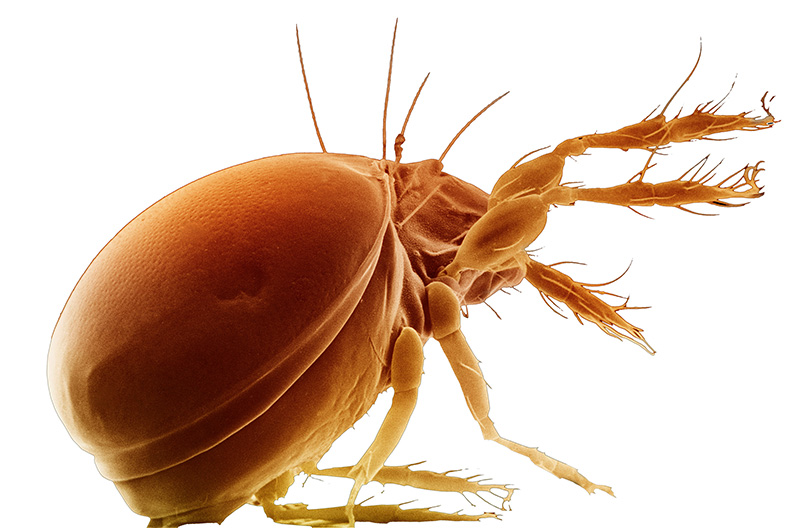Say “mange” and many dog owners will run in the opposite direction for good reasons. Mange, or demodicosis, is caused by Demodex mites and characterized by skin lesions, hair loss, and compromised immune system as well as genetic disorders. The severity of symptoms of the inflammatory canine disease depends on the type of Demodex mite that inhabited the affected dog.
Effective management of mange in your dog starts with reliable information – how to spot its symptoms and types, how to manage its outbreaks, and how to prevent it, among others. You have the responsibility of acquiring basic knowledge about the skin infection since your dog depends on it for his physical and mental welfare while in your care.
Spotting the Symptoms
All puppies raised by their biological mothers already have demodectic mange mites, which have been transferred from the mother to the puppies usually during cuddling. While most dogs will live harmoniously with the parasites without suffering any negative consequences, many dogs will suffer the symptoms. Keep in mind, too, that the type of mite present will determine the symptoms experienced by the affected dog.
Your dog’s veterinarian is the best person to determine that indeed the symptoms present in your dog are actually mange. You should never diagnose your dog’s health conditions on your own since you have little to no knowledge about canine illnesses and injuries. You will do more harm than good when you administer medications without proper veterinary supervision.
Veterinarians classify mange into two major types, namely:
- Sarcoptic mange is a highly infectious canine disease caused by oval-shaped, light-colored microscopic mites. It can easily be transferred between hosts and can be extremely itchy, which results in secondary bacterial infections. It is also known for transmission from dogs to humans with the latter experiencing rashes of reddish bumps.
Affected dogs usually exhibit signs of frantic scratching and restlessness usually appearing one week after exposure. Other symptoms include reddened skin, hair loss, and body sores and scabs on the face, ears, legs and elbows but it can quickly spread to the entire body.
Demodectic mange cannot pass on from dogs to humans. In dogs, it can result in bald spots, hair loss, sores and scabs that increase the risks for secondary bacterial infections aside from the severe itching. It also comes in three types, namely:
- Localized demodectic mange only occurs in the places where the mites proliferate usually in one or two small and confined areas. Its main symptom is isolated scaly bald patches that create a polka dot appearance on the dog’s face. It is a common ailment in puppyhood but, fortunately, 90% of its cases can be resolved without medications.
- Generalized demodectic mange usually affects larger areas of a dog’s skin or entire body. It often starts due to or is a sign of a weakened immune system, an endocrine issue, or a genetic problem, among other underlying health issues. It also results in more secondary bacterial infections, which results in a highly itchy sensations and smelly skin.
- Demodectic pododermatitis is the most resistant form of mange. While it is confined to the paw, it is typically accompanied by bacterial infections while deep biopsies may be necessary to identify the disease.
The treatment of mange will depend on its type. You and your veterinarian will discuss the best options in medications for the effective treatment of your dog’s mange as well as the effective methods of managing and living with it. You should follow your veterinarian’s recommendations since mange can be a challenging disease to manage.
Treating the Symptoms
Your first step in dealing with mange is to take your affected dog to a qualified veterinarian. Your dog will be subjected to a physical exam, which will include analysis of skin scrapings to confirm the presence of mites. You should also cooperate with your vet in terms of providing information about your dog’s medical history and clinical signs.
It must be emphasized, too, that your veterinarian will also consider an alternative diagnosis in case mites are absent. For example, a a urinalysis may reveal that your dog has a metabolic disorder or a hair follicle analysis may reveal a bacterial infection.
In a mange diagnosis, medical treatment may not be necessary as the mange can resolve by itself, as is the case of localized mange. But for severe generalized cases, your veterinarian will prescribe long-term medication for effective control of the inflammation; the medication can come in the form of drugs applied on the skin or administered by mouth or injection. You may also be required to apply lime-sulfur dips to the affected areas, which will relieve many of the symptoms.
Even when the mange appears to be in control, you should continue administering the prescribed medications since mange can easily return, too. Skin scrapings are also a must to check the progress of the treatment.
For prevention purposes, veterinarians strongly recommend maintaining good overall health including good grooming. Be sure to schedule regular professional grooming services at Petsmart or Petco, which will keep the mange mites from taking root, so to speak.


